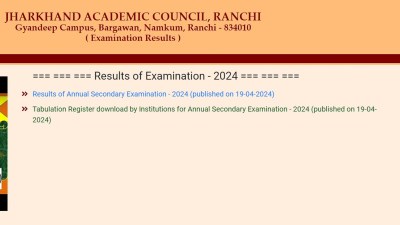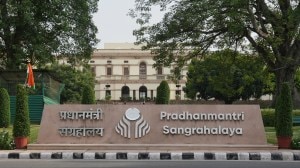- India
- International
‘I feel we’ve plateaued; unless something dramatic happens during the rains, we won’t go beyond this’: Ajoy Mehta
Our case doubling rates are now more than 30 days. We’ve almost reached a stage where the number of new patients coming is equal to those being discharged. But we have to be cautious. We still do not know how the virus will mutate during monsoon.
 Ajoy Mehta said state poised for a V-shaped recovery. (Express Photo)
Ajoy Mehta said state poised for a V-shaped recovery. (Express Photo)
Maharashtra’s outgoing Chief Secretary and Chief Minister Uddhav Thackeray’s new Principal Advisor Ajoy Mehta, who has been at the forefront of the state’s battle against Covid-19, speaks to Sandeep Ashar on why he thinks the infection curve has plateaued, economic revival and the challenges ahead.
How would you describe the current Covid-19 situation in Maharashtra?
It is stable and under control. Let’s be honest, the numbers are not going down yet, but they aren’t going up either. There was bound to be an increase with whatever opening up we have done so far. But what we have been doing is to open up public and economic activity to an extent that our health infrastructure can manage. You can’t open to an extent where it gets overloaded.
Read| Trend of decline in daily deaths offers glimmer in Maharashtra
What are the reasons for the substantial surge in case loads you are witnessing in Mumbai’s satellite towns and some other tier-2 cities? Why were Thane, Mira Bhayander, and Ulhasnagar civic chiefs suddenly transferred?

Almost 95 to 96 per cent of our cases are coming from 10 to 12 municipal corporation areas even today. The rural spread is very much under control. Even within these areas, the case load in three or four — municipalities in Mumbai Metropolitan Region (MMR), Pune and Solapur — is worrying.
One reason for this is that there is fundamentally a lot of cross traffic in these belts. MMR, for instance, also has an interface with the rural areas. It is much easier to control an infection when you have a population that is stable. When people are transiting through, there is every likelihood that they leave the virus. Also, these areas need to make more efforts towards testing, tracking and isolating.
We were not happy about the state of affairs in these corporations. We found that for each positive patient, they were tracing only three or four high-risk contacts. You see the whole game is to break the transmission by aggressively isolating those who may have come in contact with the virus. Then there was a complete lack of ownership. If a case was reported in a municipality, we found that the efforts were directed towards showing how it did not belong to the municipality, rather than actively tracing the contacts. Thirdly, the surveillance was weak.
What are the projections for Covid-19 cases?
My feeling is that we have plateaued. Unless something dramatic happens during the rains, we won’t go beyond this. Our case doubling rates are now more than 30 days. We’ve almost reached a stage where the number of new patients coming is equal to those being discharged. But we have to be cautious. We still do not know how the virus will mutate during monsoon.
When will be the next phase of reopenings and what will open up?
The next step is to assess how many more you can allow in offices. Everything will depend on how you manage public transport. We are looking at a couple of things really. One is to keep the (infection) curve stable and heading southwards. More importantly, we are looking at changing public mindset. Once we are a little more sure that everyone won’t come out together when we reopen further, we do not mind opening up even fully. The minute we have a solution to social distancing in Mumbai, I’d say open up everything.
How do you manage the suburban rail traffic load?
That’s the key question. Trains that are supposed to carry 2,000 passengers are carrying 6,000 people or more. Those are super crush loads. We are coming to the conclusion that staggering of office timings, staggering of work days and work from home is the only method through which you can manage large commercial cities like Mumbai.
We have also been working on how to open up the city’s business districts. In these areas, everybody will be allowed to operate daily with a certain staff attendance at a given time and every hour of the day and every day of the week will be occupied by work. Five- or six-day-work week system will go. Each office will have to come forward to say we will call (say) 10 per cent staff in the morning, 20 per cent post lunch and 30 per cent at night. Similarly, work days can be divided among employees. You will now have to look at some offices starting at say 6 am and finishing by lunch time. Another subset beginning at lunch and finishing by dinner… Then those that will start post dinner will run through the night.
Maharashtra has the second worst mortality rate after Gujarat. What steps are being taken to change this?
We have been honest with the numbers. To bring down the mortality rates, we have stepped up surveillance in a big way. In a containment zone, every person will be monitored on a daily basis, especially if he is above 60 and has comorbidities. In some cases, we have also found that senior doctors (in government hospitals) have not been able to go in because they are comorbid themselves. We are now saying they should be available at hand to guide juniors. We have come up with different (treatment) protocols for different comorbidities.
With the vaccine still months or even years away, economists outside the government don’t see a sustained recovery anytime soon.
My feeling is that you will see very, very sharp recoveries. I’m confident it will be a V-shaped recovery. But this may not be across sectors. There will be some that recover fast, others that will take time. The resurrection of demand will also be sequential.
Jobs are being lost across sectors. But the state is yet to announce a revival package. Why so?
You need to do what I call a shift of jobs. The sectors that will take off faster will absorb a lot more people. Then there will be new businesses that you haven’t even known about. That is why we plan to take up short-term reskilling programmes in a big way. We are also aware of the need to protect the vulnerable sections. While the revival package will come, one thing’s clear, we cannot have a mechanism that lets units pay off dues and shut down. We will mainly be looking for those that will carry on and even increase employment, and sectors that have a cascading impact across the economy.
To revive the business climate, we are also making it more predictable, simpler and industry friendly.
Apart from MGNREGA, is there any livelihood measure planned for labourers leaving cities and returning to villages? Is Maharashtra also considering urban employment schemes?
In rural areas, MGNREGA is good. Also, with a good monsoon expected this year, agriculture will absorb a huge amount of rural labour. The next jump in rural employment will come when you start processing horticulture products. Maharashtra has done well in horticulture. We are fine-tuning agriculture to meet industry’s needs. Urban employment will fundamentally come from the service industry and knowledge industry where the state is poised for a big gain.
What are the plans to bring back the migrant workforce? Can sons of the soil fill all positions left vacant?
People leave homes for better prospects and not incentives. I’m confident Maharashtra will provide the best prospects. The biggest incentive will be a booming industry. As far as sons of soil are concerned, the issue is not replacing one person with another. It is the need to upskill the working population. So that when jobs become available, these people become eligible for it.
Chief secretary for three different governments, two extensions, an election, a farm loan waiver, Covid-19, and now principal advisor to the CM. The year gone by has been rather eventful for you personally?
I’m tired (smiles).
But coalition partner Congress seems displeased with you?
I’m bound to work by the law. My loyalty is to the good of the state. It is foremost on my mind. To achieve this, many times we have to speak our mind fairly and frankly. In that process, there may be some people who do not like it. That’s something I can’t help.
What inquiry is going to be held regarding unreported deaths?
Our priority was to save lives. If there have been aberrations where people were trying to save statistics rather than lives, we will take action. But I do not think there was any malafide intention. In Mumbai, for instance, reports are now coming in from 3,000 facilities. Similarly, we had just two testing laboratories initially, now we have 100. They do 18,000 tests a day. There is a lot of data to collate.
Latest death audit reports suggest that about 84 per cent of those who died (up to May 10) had no travel history or known contact. Have we entered the community transmission phase?
I can say with all certainty that we are not in the community transmission phase. You’ll never have a flat curve in community transmission. You’ll have cases coming in from everywhere at random, which isn’t the case.
Fundamentally, death audits are meant to find out if there is a need to change some treatment protocols. They are not meant for contact tracing. Such audits may have been carried out on the day of a patient’s death, while index case tracing goes on. In almost all cases, the index case has been traced.
Complaints of overcharging of patients and low bed availability in private hospitals persist despite the government capping treatment rates and setting up a bed availability dashboard. Why?
It is nobody’s case that deviant behaviour has been completely wished away. But what we have now is a system where people can complain and redressal takes place. As far as bed availability (is concerned), what has changed is that previously, the patient would hunt for beds, now we are holding him to a bed. Beds are available. However, if you want to pick and choose, there could be a problem.
How do you plan to tackle abysmal kharif crop credit availability and the issue of poor seed quality that is now coming up?
There was a slow take-off, but now things have picked up. Almost 27 per cent credit has been disbursed, which is a per cent or two higher than last year. There are some complaints regarding seed quality in certain places. Action will be taken. This is the first time when seeds and fertilisers are being delivered right to the farmer’s boundary.
What are Covid-19 lessons from urban planning’s point of view? Does this not make a case for regulating slum densities, realigning development regulations?
Certainly. Business as usual will mean sickness and death if Covid-19 remains. The whole urban planning concept will undergo change. Development control regulations will have to be rewritten. Housing policies will need an overhaul. We need universal housing, inclusive housing. There is also a need to think how you get to work. We will have to think of designing office spaces that promote cycling to work, walk to work. While currently our homes are only designed as homes, they will now have to plan for a workspace as well.
Opposition says the state administration has lacked a cohesive Covid-19 strategy.
I won’t get into who is saying what. I don’t think there is any problem with communication. What we are facing right now is unprecedented.
Till March 9, none of us even knew what Covid-19 was all about. Please realise the magnitude of this crisis. A flood hits one, two or 25 villages. Here, the whole world has been swept away. You are fighting an unseen enemy. But we have learnt along the way. The administration has its ears to the ground and has been proactive.
Apr 19: Latest News
- 01
- 02
- 03
- 04
- 05






































